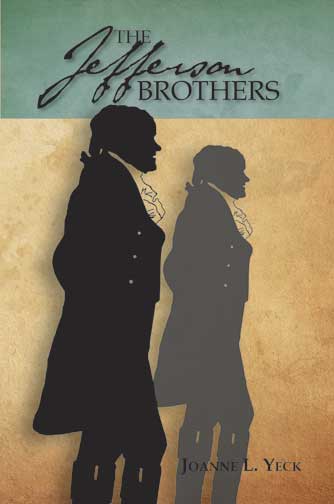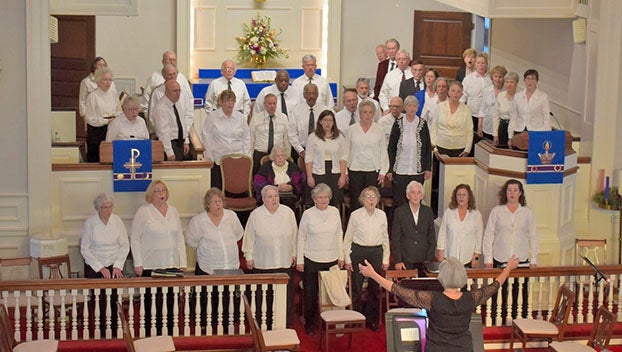Jefferson Brothers
Published 3:28 pm Thursday, October 18, 2012
Joanne L. Yeck, a historian and author who delighted readers last year with A Place Called Buckingham, will be at Maysville Presbyterian Church on Sunday, October 28, at 2:30 p.m., to talk about her new book, The Jefferson Brothers.
The program, hosted by Historic Buckingham, Inc., will include a book signing; and light refreshments.
Focusing on Randolph Jefferson, Thomas Jefferson's only brother who was 12 years younger than Tom, the book offers an intensive study of not only Randolph but of the two siblings as well as an insightful look into their family tree.
The book opens with a chapter on their father, Peter Jefferson and follows with a chapter on matriarch Jane Jefferson.
That first chapter also introduces the reader to Peter Jefferson's father, Thomas Jefferson, II, who more than likely set the example of civil service for his son Peter and the other Thomas, his grandson and namesake.
Introducing Peter Jefferson, Yeck offers, “Over the decades, the life of Peter Jefferson has been preserved more as legend than as fact. The long shadow cast by his prodigiously talented son, Thomas, has obscured and lessened Peter's pioneering accomplishments.”
She adds, “Stepping back to Colonial Virginia, Peter Jefferson emerges as an influential figure in the development of Virginia's Piedmont, with a distinct vision for the James River's Horseshoe Bend.”
Referencing Peter's father Thomas, Yeck writes, “Thomas was a Gentleman Justice for Henrico for twenty years, a Captain in the Militia, and for at least two years, held the office of High Sheriff in the county.”
Setting the stage for the importance of that familial influence, Yeck, below the title of chapter one, highlights a quote that Thomas Jefferson shared with his younger brother in 1789. It reads, “No society is so precious as that of one's own family.”
While documenting the lives of the two brothers, Yeck interweaves their personalities with the historic as well as ordinary events they faced day-to-day.
Throughout the book, she connects readers with a comprehensive look at life at Snowden, Randolph's Buckingham plantation along the James.
There, Randolph, who often looked to his older brother for advice when it came to his agricultural pursuits, raised crops, typical to the area, along with beef, sheep, and horses.
However, Yeck shares that Randolph did not always follow his brother's farming advice, especially when it came to tobacco-a crop that was not suitable at Monticello but proved very successful at Snowden.
As the reader becomes acquainted with Randolph, they also develop a better understanding of the role Buckingham played in the Revolutionary War.
Randolph, who rose to the rank of captain in the Militia, rode with General Thomas Nelson's Corps of Light Horse. He also served on the home front when Tarleton and the Redcoats threatened central Virginia.
Yeck offers Buckingham residents a sense of pride in the county's involvement in fighting for this nation's independence.
“Buckingham was bustling with war activity,” writes Yeck. “Numerous men in the county gave supplies in support of General Nathanael Greene's army and ultimately the Buckingham Militia rode off to join Greene in North Carolina.”
She continues, “In Buckingham County, many men and their families provided guns, food, and other supplies to the county Militia which prepared to go to Greene's aid.”
Throughout the book, Yeck compares and contrasts the two brothers in ways that bring out the differences in the two men-their philosophies, personalities, and lifestyles.
All the while, she interweaves them with the everyday life of yesteryears and provides tremendous insight into the county and region's history and development.
It was especially interesting, in light of the recent anniversary of the 2011 earthquake that shook Virginia, to read, “On the afternoon of February 21, 1774, Thomas recorded in his memorandum book that he was at Monticello when the earthquake struck at 2:11 p.m. He recorded aftershocks at 2:45 p.m., 'as violent but not so long' and another the following day.”
Yeck added, “This was the first recorded earthquake in Virginia and was felt throughout the state. Church bells rang as far away as Winston-Salem, North Carolina. The estimated magnitude was 4.5 on the Richter Scale.”
A particularly captivating aspect of the book is the importance of the James River and the role ferries played in the development of the area, especially the Scott's Ferry, which helped keep the Jefferson brothers connected.
Although the book's 450 pages, which include approximately 100 pages of notes and 80 illustrations, may first seem a bit overwhelming, they offer an invaluable resource about Randolph Jefferson and The Jefferson Brothers.
Moreover, the book is a must-have reference on Buckingham's history during the 18th and 19th Centuries.
About the Author
Yeck shared that in 1995, she began looking into the Virginia heritage of her maternal grandmother, a native of Buckingham.
In her pursuit, she discovered that a branch of her grandmother's Harris family purchased a farm called Snowden from the estate of Randolph Jefferson.
“As it turned out, very few people, even in Buckingham County, knew very much about Randolph Jefferson,” explained Yeck. “And, what they thought they knew wasn't particularly flattering.”
She offered, I set out to discover the real Randolph Jefferson and was delighted by what I found.”
Subsequently, her investigation of Snowden evolved into a biography of Thomas Jefferson's little brother, who she described as “a very nice fellow once you get to know him.”
Yeck admitted, “Writing the biography of Randolph Jefferson was fraught with challenges.” She explained, “In 1770, the Jefferson home place, Shadwell, burned, destroying the early records concerning Snowden. In 1816, the Randolph Jefferson dwelling house at Snowden burned to the ground, taking with it all of his personal papers and records concerning the farm.”
Then, in 1869, when Buckingham Courthouse burned, so did the public papers concerning Randolph Jefferson.
“No sane historian would tackle a subject with so little evidence,” shared Yeck, adding that because of her personal interest in Snowden, she was not deterred.
“It is remarkable just how much has survived about Randolph, particularly in Thomas Jefferson's collected paper,” offered Yeck. Obviously, her perseverance paid off for Yeck and her readers.
“The Jefferson Brothers also shows Thomas Jefferson in a new light, revealing him as a generous, patient, and helpful big brother,” shared Yeck. “In many ways, Thomas replaced the father that Randolph Jefferson never knew. He freely gave advice to the younger man, which was not always taken, but was graciously received.”
Although she resides in Kettering, Ohio, Yeck obviously spends much time in Virginia.
After earning her doctorate in cinema studies at the University of Southern California, Yeck taught and wrote about film history for many years. Not only did she author numerous articles concerning Classic Hollywood and American Popular Culture, but also she co-authored Movie Westerns and Our Movie Heritage.
Her work concerning Randolph Jefferson and Snowden resulted in a Jefferson Fellowship at the International Center for Jefferson Studies in 2010.
After publishing A Place Called Buckingham in 2011, she shared, “I've been digging up rare nuggets of Buckingham gold-treasure hunting in attics, churches, deed rooms, libraries and historical societies. Today, I see no end in sight to this marvelous adventure in Virginia history.”
For that, historians and Buckingham residents should be thankful.
[Maysville Presbyterian Church is located on Route 60 just west of Buckingham Courthouse at 12945 W. James Anderson Highway. For more information, call (434)969-3292 or 969-4355.






